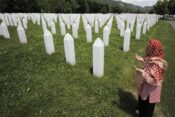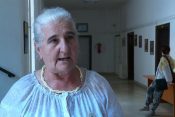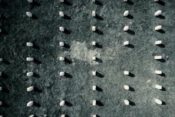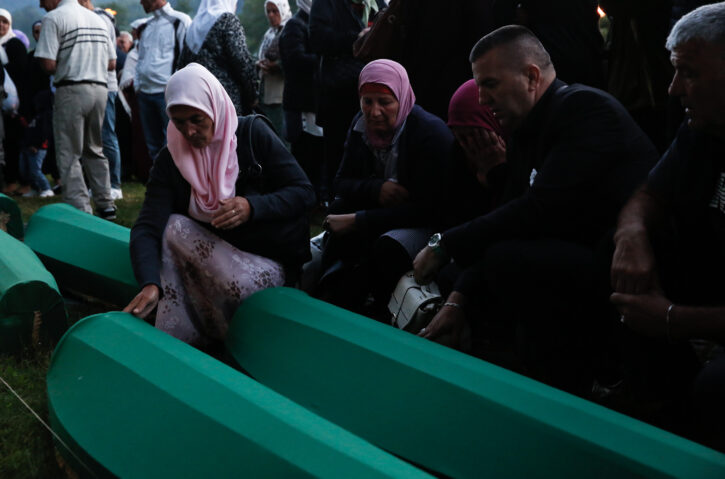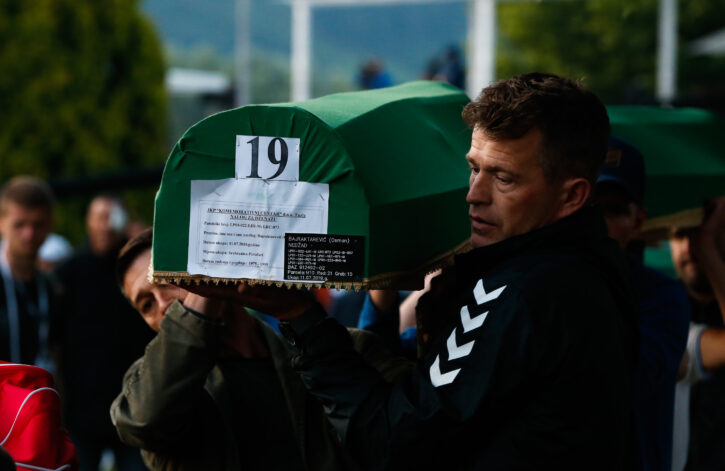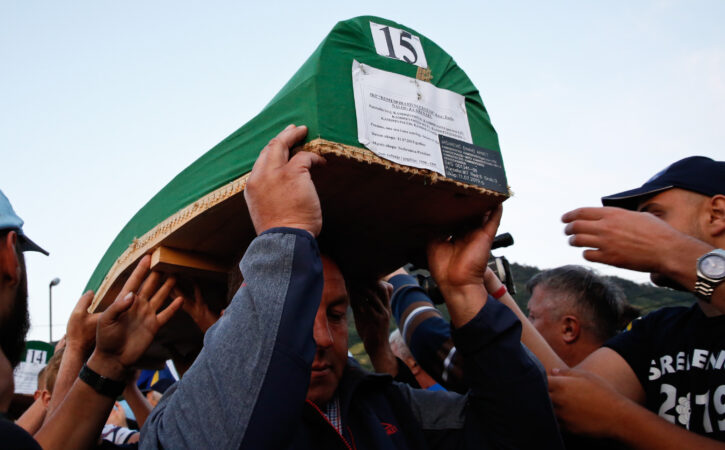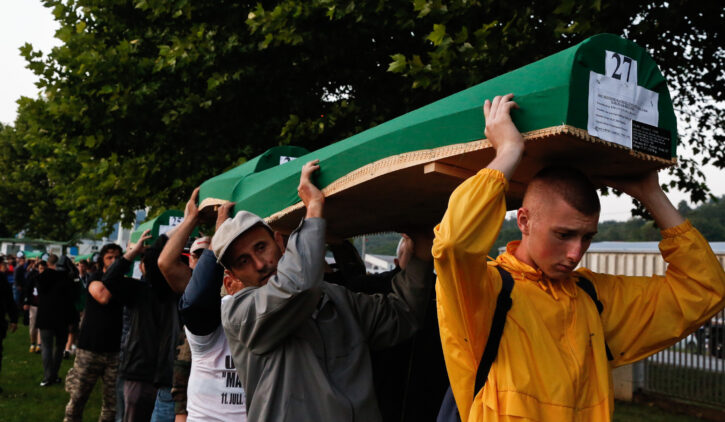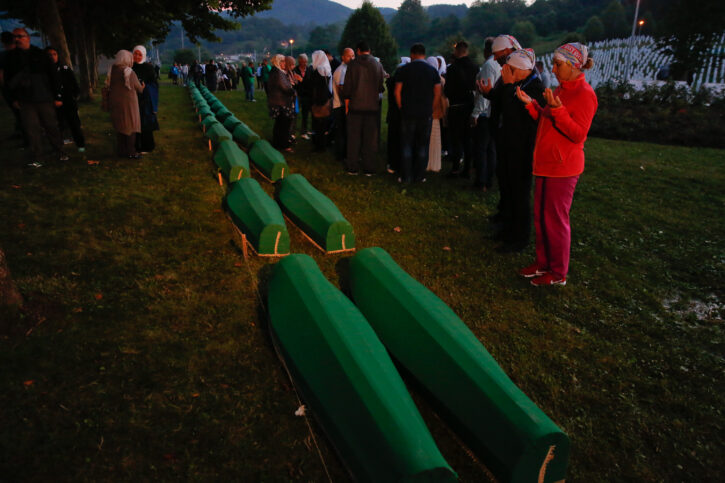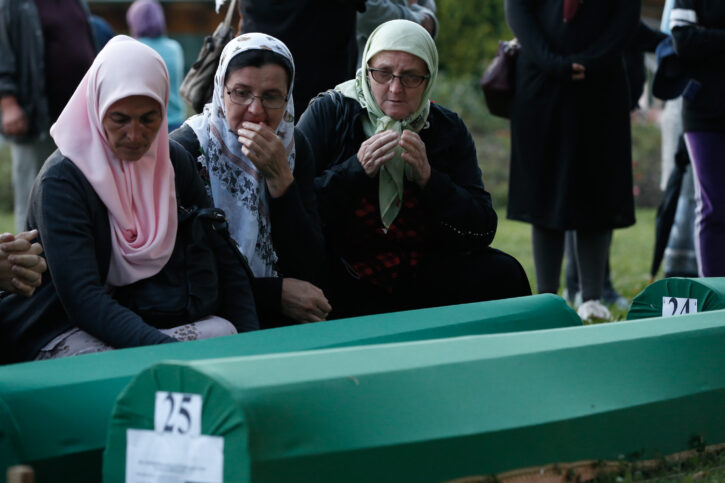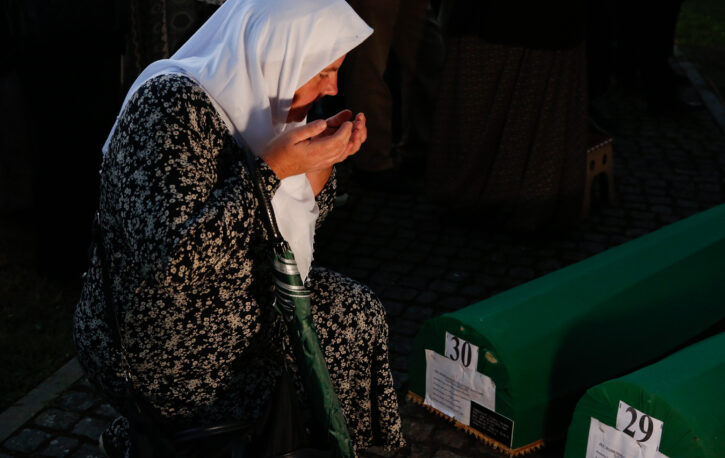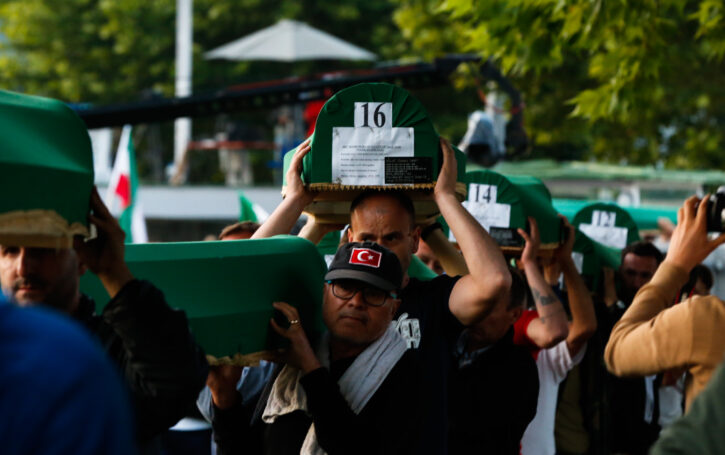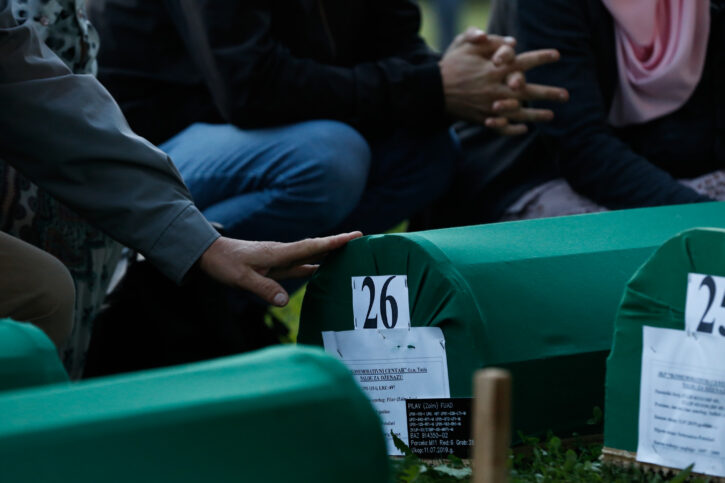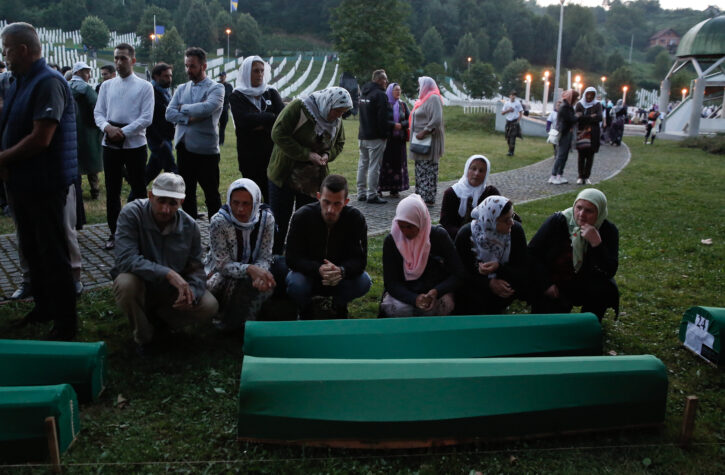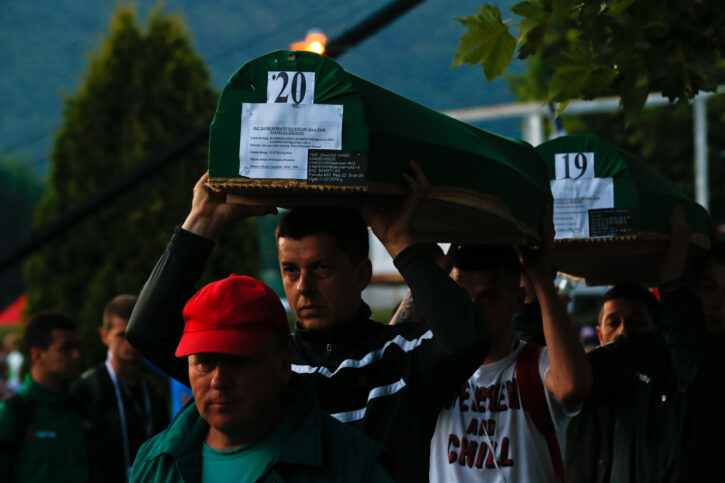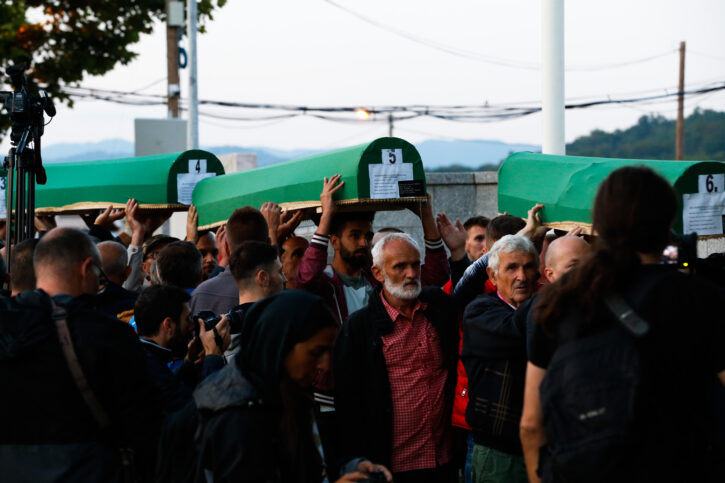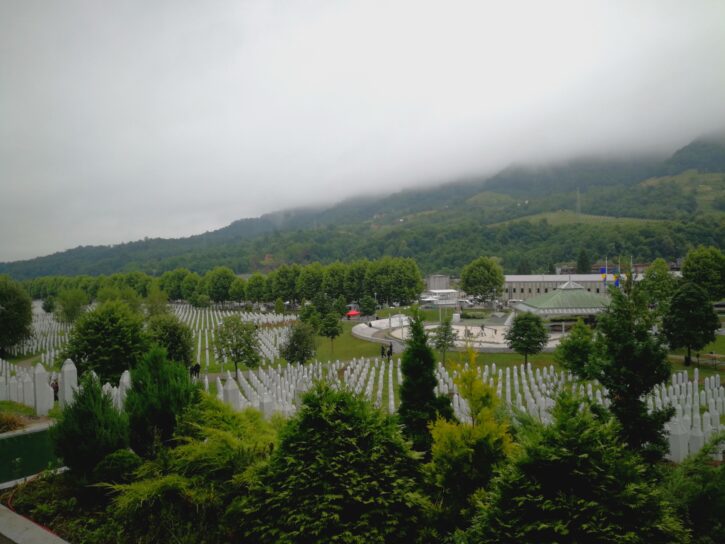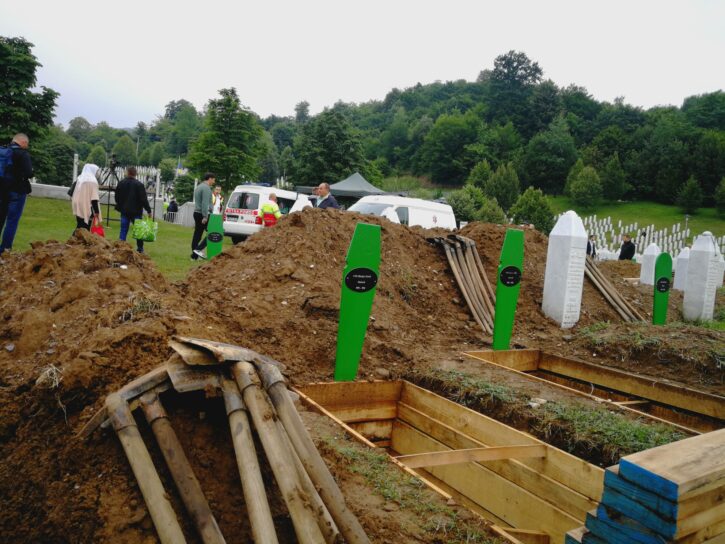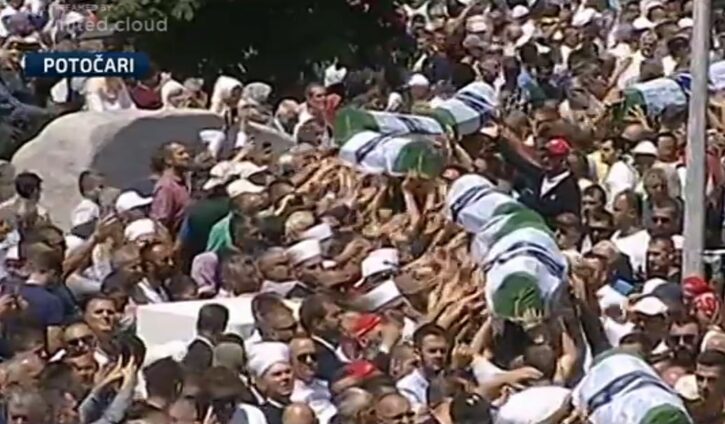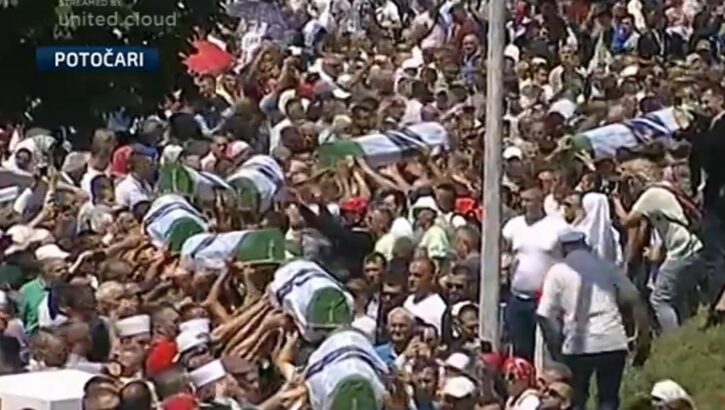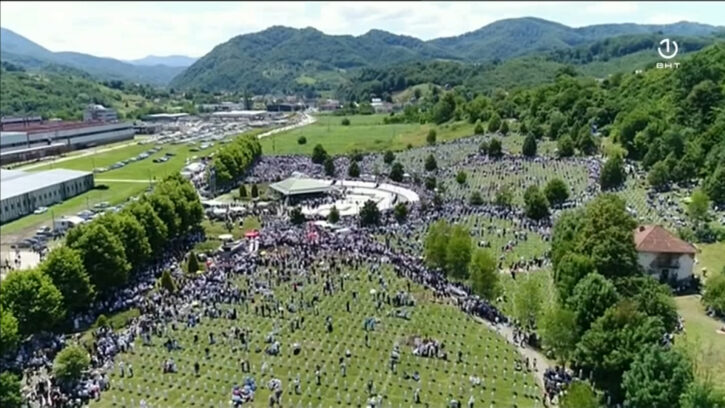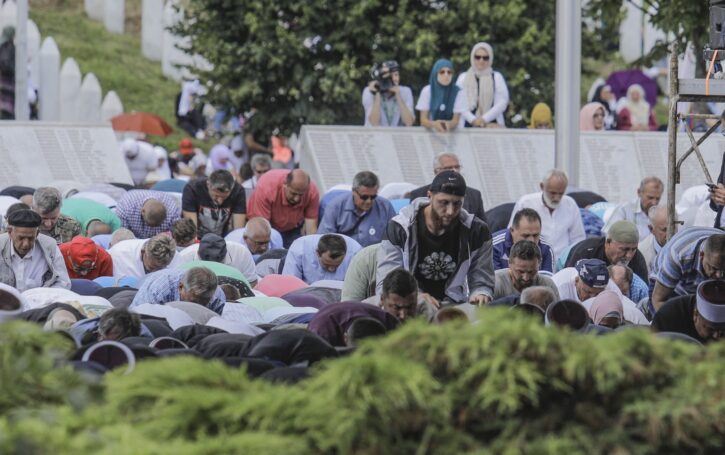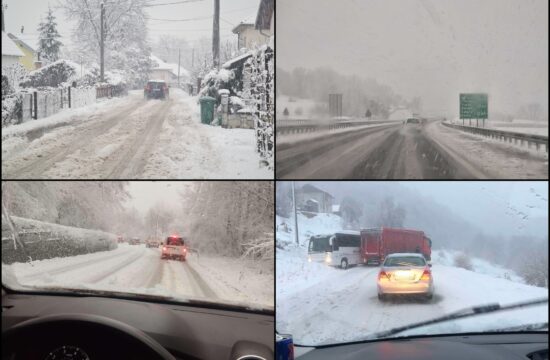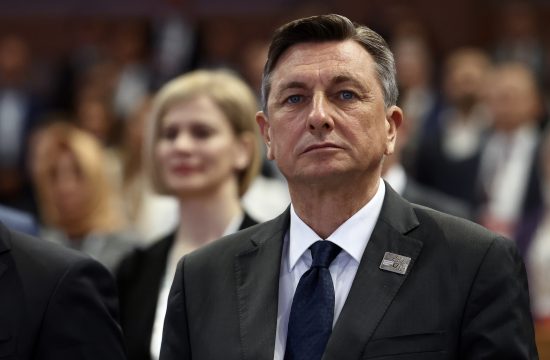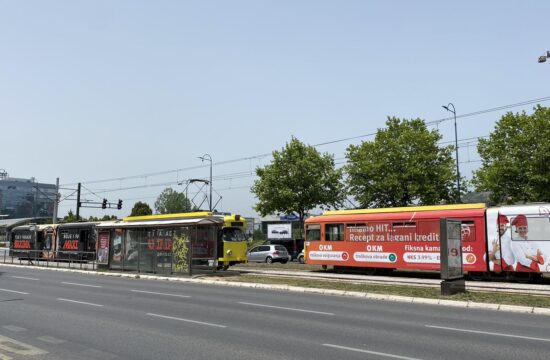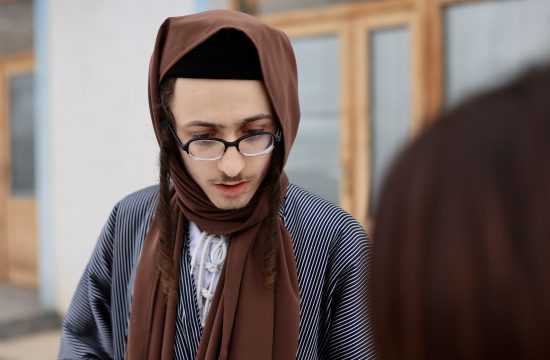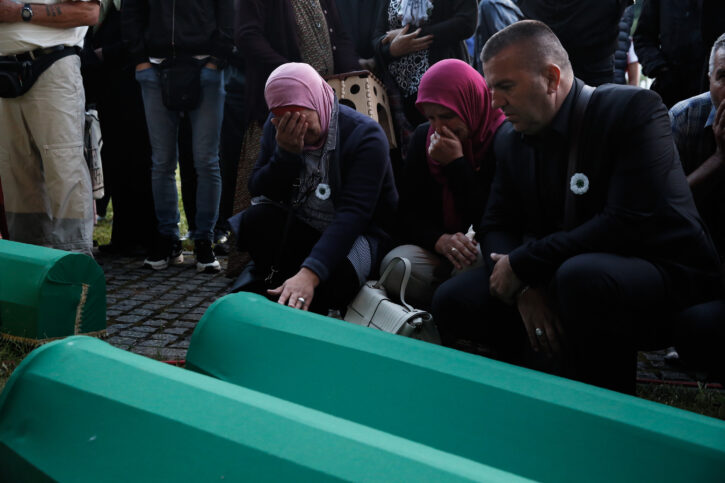
Thousands commemorated on Thursday the victims of the 1995 Srebrenica genocide that took place 24 years ago as 33 families laid to rest their loved ones to the sounds of sobbing and dirt falling on the coffins.
The newly identified victims joined the 6,610 already buried at the Memorial Centre in Potocari, near Srebrenica.
Every year, July 11th is an emotional day in Bosnia and Herzegovina when Bosniaks mark the worst crime committed on European soil since WWII.
On this day, family members find closure by burying at least a bone of the remains of their beloved fathers, husbands, sons or brothers who were excavated from mass graves, identified through DNA analysis and laid to rest at the Potocari Memorial Center, where most of them were last seen alive.
This is where Fata Isakovic saw her two sons who were 20 and 22 years old the last time.
“I cried,” she said, remembering how her younger son told her not to cry, while her older son told her not to worry.
Asim and Kasim Isakovic were killed in a storehouse in the village of Kravica, near Srebrenica, and their remains were found in a mass grave in Liplje.
As of Thursday, she will at least be able to visit their graves.
“I know where I can go to my children, to talk to them, to caress them. I didn’t know where they are for 20 years,” she said, explaining that although she is sad, she is also glad that she found them.
After the remains are identified in the DNA lab, they are put in coffins in a central Bosnian morgue and transported to Srebrenica a day before the funeral.
They spend the night at an old factory in the Srebrenica suburb of Potocari, where the Dutch UN soldiers who were supposed to protect them were based.
On Thursday morning family members and participants of the so-called “Peace March” formed lines and passed the coffins from one person to another from the factory to the cemetery at the Potocari Memorial Centre where they stayed until the afternoon burial.
The Peace March is also an annual event that commemorates the effort of 15,000 mainly Srebrenica men to escape the massacre through the woods.
Dressed in UN uniforms and driving UN vehicles they seized from the Dutch, Bosnian Serbs lured some of the fleeing men from the woods and then killed them. Others they simply hunted down.
Thousands of Srebrenica men did not survive the path toward government-held territory. For years now, thousands gather days ahead of the July 11 ceremony at a village where the survivors arrived to safety and walk the path back to Srebrenica.
On their way, they visit mass graves and are guided by some of the survivors who tell them the story of their escape.
The March participants arrive in Potocari in time to attend the funeral along with family members, friends and local and foreign dignitaries.
“It is of utmost importance for humanity to learn the Srebrenica lesson about what kind of evil people are capable of. And not only learn the lesson but immediately to deprive every criminal of the possibility to commit evil, most of all those who have already committed it,” said the head of Bosnia’s Islamic Community, Husein Kavazovic.
The evil the perpetrators committed will stain their consciousness and they will not be able to escape the truth, he said.
After official speeches and the prayer, family members carried the coffins to the pits, lowered and buried them.
Bosnian Serb forces overran the UN-protected eastern Bosnian enclave on July 11, 1995, without the Dutch soldiers firing a bullet. The Dutch commander had called for NATO airstrikes to help save the town but those never came, leaving the demilitarised population and the weakly armed blue helmets alone to face the much stronger forces of now genocide convict, Ratko Mladic.
Mladic’s forces took over control of the town, humiliated the Dutch commander and rounded up the town’s Muslim Bosniaks. They then separated men from women and little children and executed some 8,000 men and boys over three days.
The bodies of the victims were buried in a large number of mass graves in the area.
The International Criminal Tribunal for the Former Yugoslavia (ICTY) and the International Court of Justice later ruled that the massacre was an act of genocide.
New remains of the victims are found and identified yearly and buried during the July 11 ceremony.
The youngest to be buried this year is Osman Cvrk, who was 16 when he was killed.
The Bosniak member of the country’s tripartite Presidency, Sefik Dzaferovic, asked in his speech what the fault of those who were killed, including Cvrk, could have been.
“There is only one reason for why they were killed – they were Muslims, Bosniaks,” he concluded.
The boy’s remains were found in several mass graves in the area of Srebrenica because after perpetrators initially buried the victims, they dug up the bodies and reburied them at other locations in an effort to cover up the crime.
This was mostly done with bulldozers and the machines tore up the bodies while loading them on trucks to be transported to some other location. By the time the remains were reburied into another mass grave, the bodies were a simple mix of people’s bones.
Among those buried on Thursday is Nura Begovic’s brother, Adil, who was hunted down while trying to escape through the woods.
“Only a few bones were found on the surface. His remains were picked up at Kostan Brdo, above Kravice,” Begovic said. “Of his entire body, I only found one fist. His clothes – a shoe, a tracksuit, a watch, and keys, confirm his identity,” she explained.
The oldest victim was Saha Cvrk, who was 82 years old and is the only woman to be buried this year.
The remains of another 140 victims are stored in the DNA identification centre in Tuzla. Some of them have been identified, but their families do not want to bury them until more of their remains are found.
More than 1.000 Srebrenica genocide victims are still missing.
Among the 6,610 victims buried at the Srebrenica-Potocari Memorial Centre, 26 are women. The oldest of all victims is 94-year-old Saha Izmirlic. The youngest was Fata Muhic, not even a day old.
The first such mass funeral took place in 2003, when about 1,000 victims were laid to rest.

